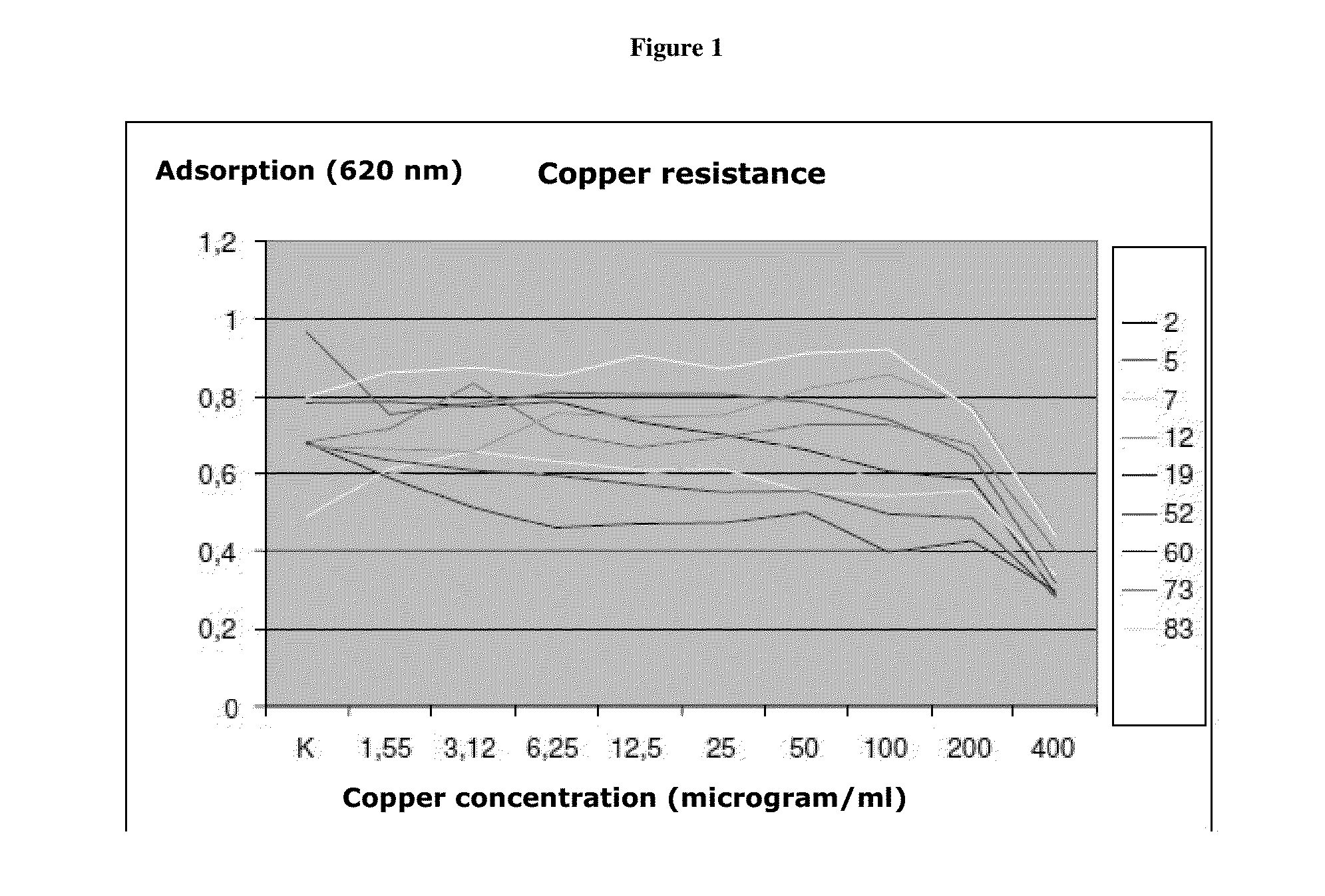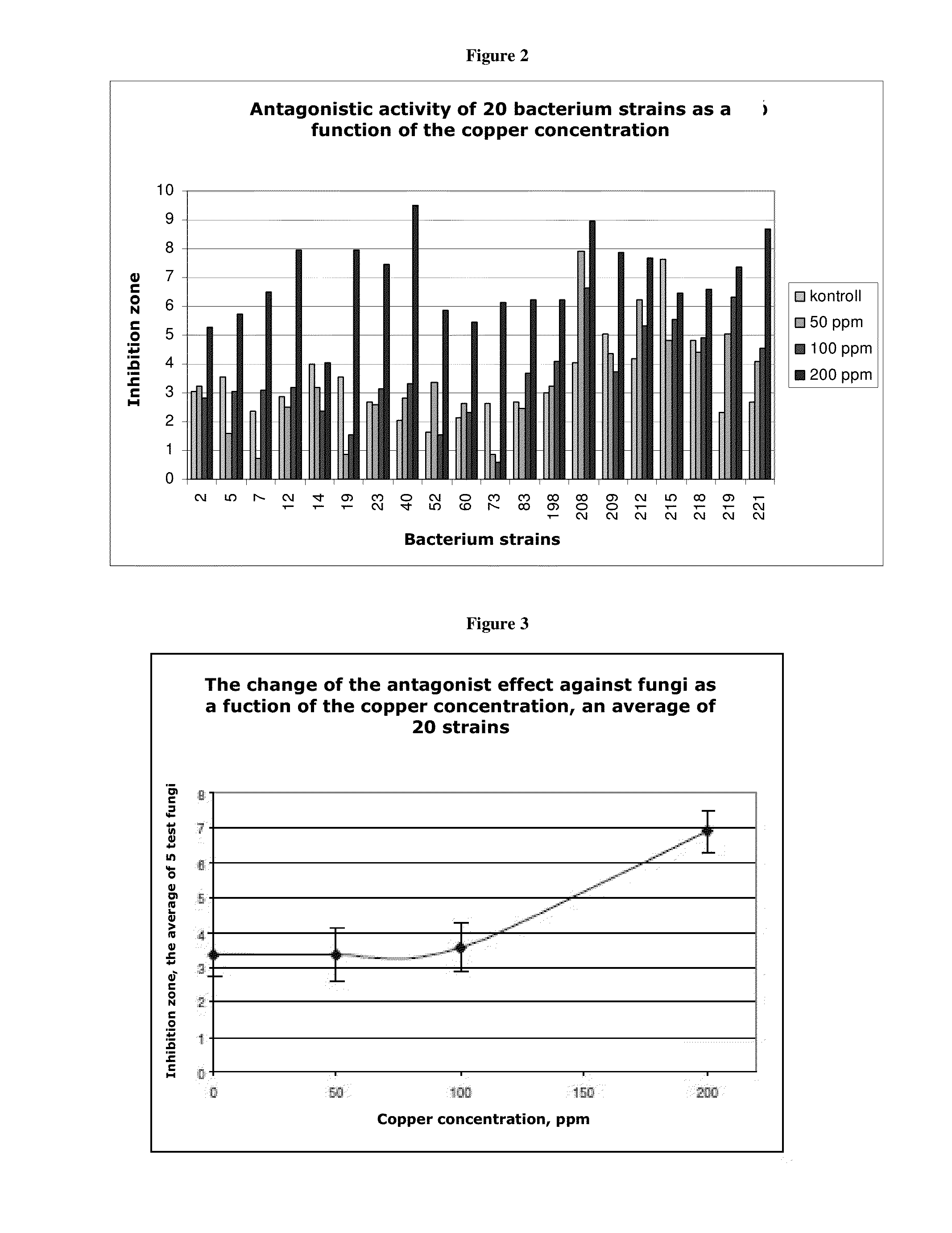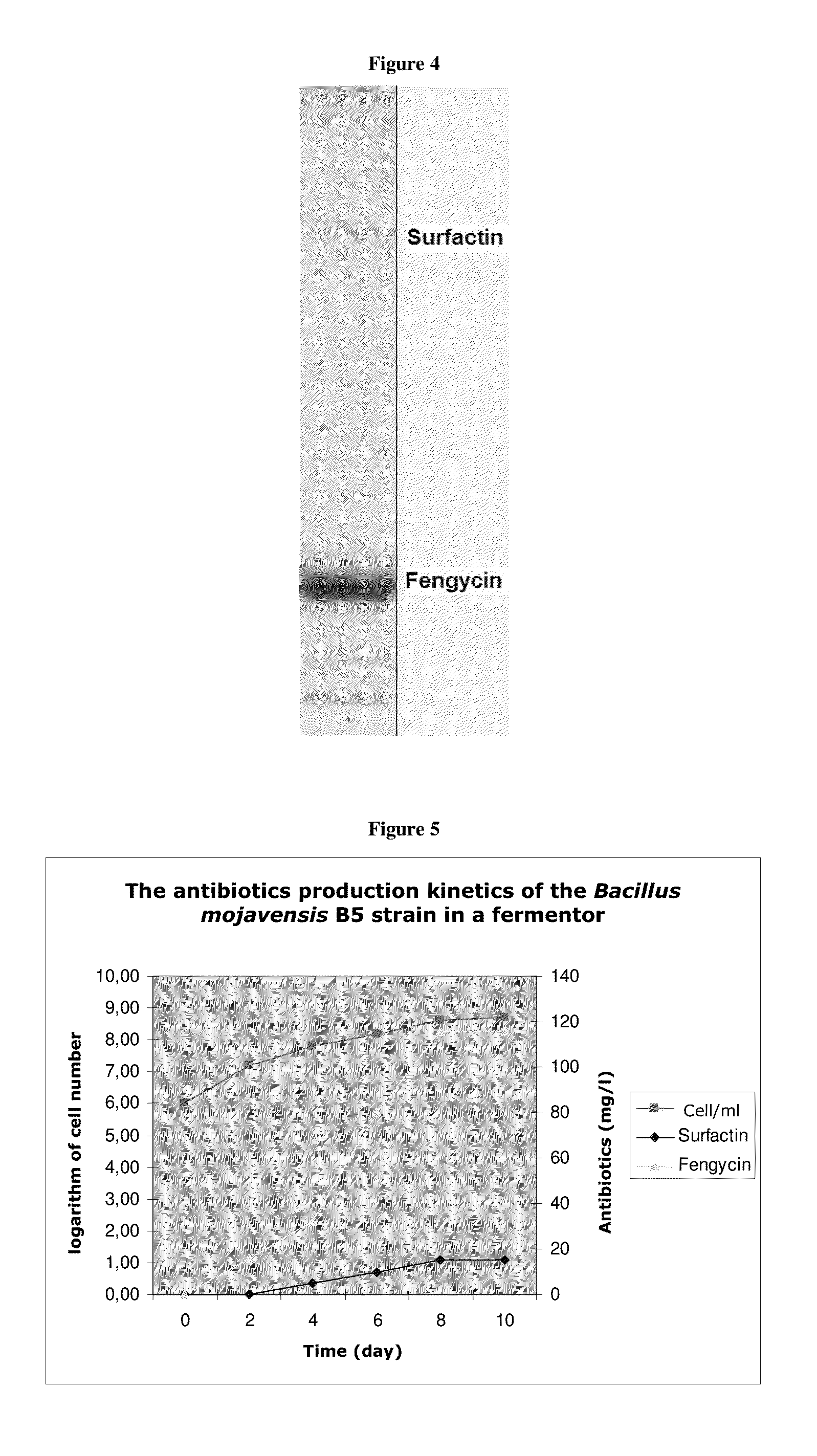Copper resistant, fengycin-producing bacillus mojavensis strain for controlling vegetable pathogens, its use and compositions containing it
a technology of bacillus mojavensis and fengycin, which is applied in the direction of biocide, genetic material ingredients, bacteria based processes, etc., can solve the problems of lack of copper, inability to achieve the expected pest control effect of combining copper-containing pesticides, and inability to achieve the expected effect of pest control
- Summary
- Abstract
- Description
- Claims
- Application Information
AI Technical Summary
Benefits of technology
Problems solved by technology
Method used
Image
Examples
examples
[0033]In the following, our invention is further detailed through preparation and working examples, referring to the figures listed below, annexed to the description.
[0034]FIG. 1 shows the copper-ion sensitivity results of the strains showing excellent antagonist capability in the widest spectrum.
[0035]FIG. 2 shows the antagonist activity of 20 bacterium strains as a function of the copper concentration.
[0036]FIG. 3 shows the change of the antagonist effect against fungi as a function of the copper concentration, an average of 20 strains.
[0037]FIG. 4 shows the thin layer chromatograpy of the antibiotics spectrum secreted by the Bacillus mojavensis B5 strain.
[0038]FIG. 5 shows the antibiotics production kinetics of the Bacillus mojavensis B5 strain in a fermentor.
[0039]FIG. 6 shows the ability of the Bacillus mojavensis B5 and the copper-resistant mutants made therefrom to produce extracellular protease.
[0040]FIG. 7 shows the inhibition of Pseudomonas syringae by the a Bacillus mojav...
PUM
| Property | Measurement | Unit |
|---|---|---|
| temperature | aaaaa | aaaaa |
| temperature | aaaaa | aaaaa |
| diameter | aaaaa | aaaaa |
Abstract
Description
Claims
Application Information
 Login to View More
Login to View More - R&D
- Intellectual Property
- Life Sciences
- Materials
- Tech Scout
- Unparalleled Data Quality
- Higher Quality Content
- 60% Fewer Hallucinations
Browse by: Latest US Patents, China's latest patents, Technical Efficacy Thesaurus, Application Domain, Technology Topic, Popular Technical Reports.
© 2025 PatSnap. All rights reserved.Legal|Privacy policy|Modern Slavery Act Transparency Statement|Sitemap|About US| Contact US: help@patsnap.com



